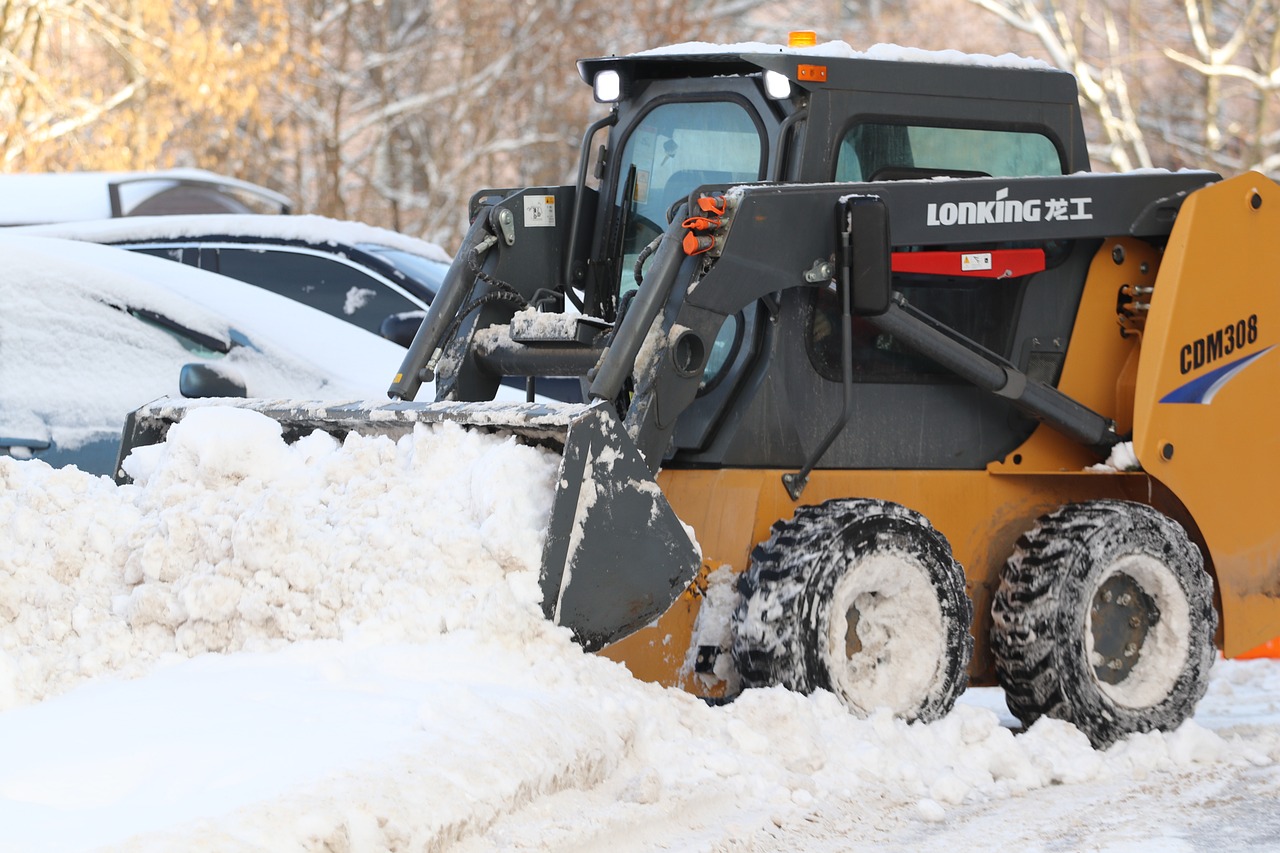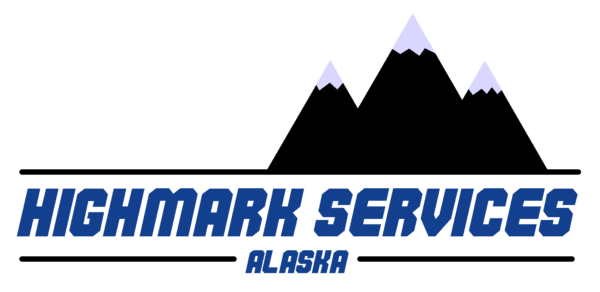As winter blankets the landscape with its frosty embrace, snow and ice can quickly become more than just picturesque scenery—they can pose significant challenges to transportation, safety, and daily routines. Whether you’re a homeowner, a business owner, or responsible for maintaining public spaces, knowing the best strategies for snow and ice removal is essential.
This comprehensive guide aims to equip you with the knowledge and techniques necessary to tackle snow and ice effectively, ensuring safety and accessibility throughout the winter months in Anchorage, Alaska.
Understanding Snow and Ice
Anchorage, Alaska, stands as one of the most snow-covered cities in the United States, experiencing significant snowfall and enduring cold temperatures for much of the year. As the largest city in Alaska, Anchorage grapples with unique challenges posed by its Arctic climate, making snow and ice removal a crucial aspect of daily life. To effectively navigate winter in Anchorage, it’s essential to comprehend the characteristics of snow and ice in this region, as well as the techniques employed to manage them.
Anchorage’s climate is classified as subarctic, characterized by long, cold winters and short, mild summers. From October to April, residents can expect below-freezing temperatures and substantial snow accumulation. The city receives an average annual snowfall of around 75 inches, with higher amounts recorded in surrounding areas and mountainous regions.
The snowfall in Anchorage typically begins in late October or early November, with peak accumulation occurring between December and March. Snowstorms originating from the Gulf of Alaska and the Bering Sea often blanket the city, depositing heavy snowfall and creating challenging conditions for residents and commuters alike.
Key Factors in Snow and Ice Removal in Anchorage, Alaska
Effective management of snow and ice is essential to ensure the safety and accessibility of roads, sidewalks, and public spaces throughout the winter months. Here are several key factors influence the approach to snow and ice removal in Anchorage:
Climate and Snowfall Patterns
Anchorage experiences long, cold winters with significant snow accumulation. Understanding the city’s climate and typical snowfall patterns is crucial for planning and implementing effective snow removal strategies. Municipal authorities and residents must anticipate frequent snowstorms and prepare accordingly.
Topography and Microclimates
Anchorage’s topography, including its proximity to the Chugach Mountains and its location along the Cook Inlet, contributes to localized variations in weather conditions. Microclimates can result in differences in snowfall accumulation and temperature across the city. Snow removal efforts must account for these variations to ensure comprehensive coverage and accessibility.
Priority Routes and Infrastructure
Municipalities in Anchorage prioritize snow removal efforts based on the importance of transportation routes and critical infrastructure. Major roadways, highways, and arterials are cleared first to facilitate emergency response, public transit, and essential travel. Sidewalks near schools, hospitals, and public facilities also receive priority attention to ensure pedestrian safety.
Equipment and Resources
Adequate equipment and resources are essential for effective snow and ice removal. Municipalities invest in snowplows, snow blowers, salt spreaders, and other specialized equipment to clear roads and public spaces efficiently. Additionally, sufficient staffing and budget allocations are necessary to maintain snow removal operations throughout the winter season.
Deicing Strategies
Deicing agents, such as rock salt (sodium chloride) and calcium chloride, are commonly used to melt ice and improve traction on roads and walkways. However, in Anchorage, where temperatures can remain below freezing for extended periods, alternative deicing methods may be necessary. Magnesium chloride and potassium acetate are effective deicers at lower temperatures and are less harmful to the environment and infrastructure.
Community Engagement and Cooperation
Snow and ice removal efforts are most effective when there is active engagement and cooperation between municipal authorities, businesses, and residents. Clear communication about snow removal schedules, parking restrictions, and safety guidelines helps coordinate efforts and minimize disruptions. Community participation in snow clearing initiatives, such as clearing sidewalks and fire hydrants, fosters a sense of shared responsibility for winter maintenance.
Environmental Considerations
Environmental impacts, such as runoff contamination and damage to vegetation, must be considered when implementing snow and ice removal strategies. Minimizing the use of chemical deicers, properly disposing of snow and ice debris, and incorporating eco-friendly practices, such as snow storage facilities with sediment traps, help mitigate environmental harm.
Adaptability and Emergency Response
Flexibility and adaptability are essential in responding to unexpected weather events, such as blizzards, freezing rain, or rapid snow accumulation. Municipalities should have contingency plans in place for emergency snow removal and communication protocols for informing the public about road closures, transit delays, and safety advisories.
Techniques for Snow Removal
Here are some techniques commonly used for snow removal in Anchorage, Alaska:
1. Shoveling
Shoveling is a traditional and effective method for removing snow from sidewalks, driveways, and other small areas. Use a sturdy snow shovel with an ergonomic handle to minimize strain on your back and arms. Begin by pushing snow to the sides with the shovel, then lift and toss it away from the cleared area. Take frequent breaks to prevent overexertion, and consider using a snow pusher shovel for pushing larger amounts of snow.
2. Snow Blowing
Snow blowers, also known as snow throwers, are powerful machines designed to clear large amounts of snow quickly. There are two main types of snow blowers: single-stage and two-stage. Single-stage snow blowers are ideal for clearing light to moderate snowfall on flat surfaces, while two-stage snow blowers are better suited for heavy snow and uneven terrain. When operating a snow blower, start at the center of the area to be cleared and work your way outward in overlapping rows. Be mindful of obstacles such as rocks, debris, and uneven surfaces to avoid damaging the machine.
3. Plowing
Snow plows are essential for clearing snow from roads, highways, parking lots, and other large areas. Municipalities typically use trucks equipped with plows to push snow to the sides of the road, creating clear driving lanes. Plowing operations are prioritized based on the volume of traffic and the severity of snowfall. When plowing snow, it’s important to avoid blocking driveways, intersections, and fire hydrants. Clear communication about plowing schedules and parking restrictions helps minimize disruptions for residents and businesses.
4. Deicing
Deicing agents, such as rock salt (sodium chloride) and calcium chloride, are used to melt ice and snow and prevent refreezing. Spread deicing agents evenly over surfaces using a handheld spreader or a mechanical spreader attached to a vehicle. Be cautious when using salt near plants, as it can damage vegetation and harm the environment. Alternative deicing agents, such as magnesium chloride and potassium acetate, are available for use in environmentally sensitive areas or at lower temperatures.
5. Heat-Based Systems
In areas with high foot traffic or where manual snow removal is impractical, heat-based systems such as heated driveways and sidewalks can be installed to melt snow and ice automatically. These systems use electric heating elements or hydronic tubing installed beneath the surface to generate heat and prevent snow accumulation. While heat-based systems are effective, they require significant upfront investment and ongoing maintenance.
6. Professional Snow Removal Services
For large properties, commercial facilities, and municipal areas, professional snow removal services offer expertise and specialized equipment to ensure thorough and timely snow removal. These services may include snow plowing, snow blowing, deicing, and snow hauling. Hiring a professional snow removal company can save time and labor while ensuring safe and efficient snow removal operations.
Final Words
In Anchorage, understanding the characteristics of snow and ice is essential for navigating the city’s winter climate safely and effectively. With significant snowfall and cold temperatures dominating much of the year, residents and authorities must employ a range of techniques to manage snow and ice accumulation.
By prioritizing snow removal, employing appropriate tools and methods, and remaining vigilant during winter weather events, Anchorage residents can ensure accessibility and safety in their communities despite the challenges posed by snow and ice.
If you need professional support to tackle snow removal this winter, look no further than Highmark Services. Our experienced team is ready to assist you throughout the entire process, from clearing sidewalks and driveways to plowing roads and parking lots. With our reliable service and commitment to customer satisfaction, you can trust Highmark Services to keep your property safe and accessible all season long.


